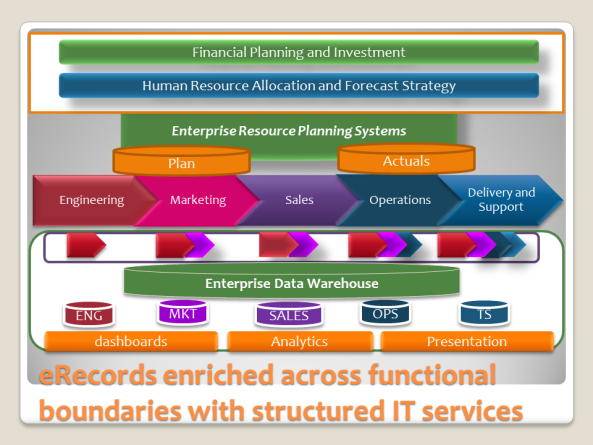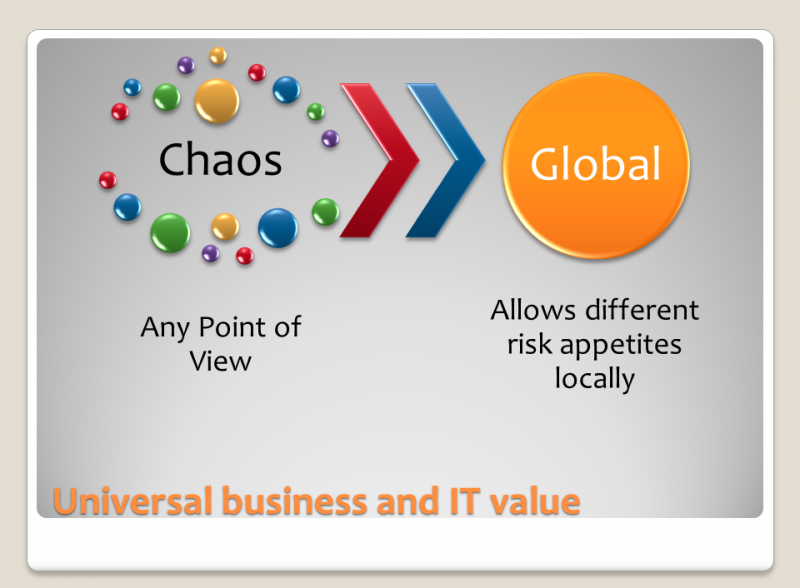Real World Perspectives
Business Stakeholder Hierarchy;
- Board of Directors
- Executives
- Officers (C-Level Executives)
- Trustees (Policy and Procedure roles)
- Stewards (Management Capabilities)
- Custodians (IT)
- Stewards (Management Capabilities)
- Executives
Business and Enterprise Architecture Dependency
-
Event Driven Architecture – Physical Architecture
Leveraging a logical grouping through the transition from current state to future state works for this solution to be realized and adopted while proving the value to the business. Your executive audience defined in the Real World perspective should be your primary audience for buy-in.
2. Business Process Architecture Life Cycle
The ability to predict your impact on all projects; whether discreet or non-discreet introduces a concrete manner in which to base decisions.
The ability to reduce the unknowns by introducing known relationships in order to ensure interoperability and fewer issues caused by change.
3. Document to Record Management
- A document refers to the intent of planned activities.
- A record provides the results of the planned activities in facts.
4. Transactional Capabilities Dependency
Value
The ability to define both reference and tiered application, storage and security for different risk appetites.
The ability to re-use the first entries and publish the customer expectations as headers to each of the various documents to make sure threading of the records.
The ability to confine each stakeholder audience Fit for Purpose to ensure quality standards based on the purpose.
Systems Thinking
Threading the business process dependencies across two primary operational requirements your asking for capabilities that allow your functional groups to perform activities for any transaction types as follows;
- Expense Transaction Capabilities
- Revenue Transaction Capabilities
Each of these two transaction types are considered the Level 2 capability in a (5) capability modeled for the real world. The Real World will summarize these event transactions that have changed between a document to a record in electronic form at the completion of each transaction.
 Graphical Perspective of the Enterprise Business Data in the Real World Model
Graphical Perspective of the Enterprise Business Data in the Real World ModelThe above graphic supplies the Enterprise Architecture components for your primary Priority with zero data loss.
When you understand the way the functional support model is designed in a Real World scenario; you can look at the term and begin to take a defensive position or you can understand the term isn’t going to make a difference. The “Stickiness” and the way it recovers and protects the companies executives “the get out of jail free card” isn’t something functional leaders are threatened with a jail term based on someones preference?
find predictive ways to execute for re-use and systemic impact and dependency governance by design of an event driven architecture.
 An event driven architecture predicts the flow of information and records enriched by the first entries to build a system model versus quantified maturity systems.
An event driven architecture predicts the flow of information and records enriched by the first entries to build a system model versus quantified maturity systems.Assume the graphical presentation above begins at the top of the photo; as you move down the page; you begin a vertical flow of your records that publish or can be acquired by your Data Warehouse. The only condition; the record must remain without any backend modification to the transaction record. Electronic records seem to have been misunderstood from an audit worthy record retention perspective. The real world will restore this vital record retention requirement by promoting the use of canned reports in your applications for operational recovery time objectives and assurance of no data loss.
- New Risk Management Standard -ISO 30300 and 30301 November 12, 2011.
- Zero data loss – original records capturing the FACT‘s around any expense or revenue transaction inclusive of the related children to the two types of financial statement components.
- Sarbanes Oxley further details the granular dimensions in GAAP, to re-confirm the translation between accepted practices with real audit tracking of the dimensions that prove or disprove audit worthiness against the two financial requirements.
In lay men terms any responsible employee at any company in any industry should aspire to have confidence in their performance contributing to the companies bottom line and whenever possible to contribute to top line revenue growth.
If you do not classify the operational architecture as your critical to recover and maintain zero downtime for these activities you will be at risk for losing your accuracy and therefore become questionable for your validity in reporting to your external regulatory and watch dog oversight stakeholders.
- What good would your resources be if they were unable to perform their duties?
- You are losing money for every minute they are unable to perform their general responsibilities.
- What resources have the most to lose?
- Those who interface with your customers
- The same customers who will want to be assured and ready to test your ability to recover based on their activities with your company.
- The resources who interface with your suppliers;
- The supplier needs your payments for goods or services delivered and they will need assurance that you have the same amount on the books as they expect.
- The two stakeholders represented above are going to be the same audience for your expense and revenue transaction workflows.
- Therefore this reference architecture focuses on the life cycle of both expense and revenue transactions in capabilities that are basic in the real world and become more functional in the Fit for Purpose layers below.
- The real world must map the primary values that pertain to the published and validated audit reports going into ERP; based on the life cycle flow and header published to enable choices and limited responses from any business service that leads us into the way IT will supply capabilities in bundled solutions.
Related articles
- Real World External Objective (lisammar10.wordpress.com)
- Troux Positioned in Leaders Quadrant in Enterprise Architecture Tools Magic Quadrant (prweb.com)
- The Importance of IT Infrastructure Documentation (intoinfrastructure.wordpress.com)
- The Art of Enterprise Architecture – Section 13 – The use of architects (enklare.wordpress.com)
- Sub process level 1 Engineering for Enterprise Architecture (enterpriseandbusinessarchitecture.wordpress.com)
- Quality Reference Architure (enterprisebusinessdata.wordpress.com)
- Associated Audit Links (enterprisebusinessdata.wordpress.com)
- Sub-process 1 Engineering Stakeholders Enterprise and Business Architects Scenario (enterpriseandbusinessarchitecture.wordpress.com)
- Use Case Scenario for EA and BA – Value in a (5) capability modeled for the real world (enterprisebusinessdata.wordpress.com)
- Recovery Time Objectives (enterprisebusinessdata.wordpress.com)
- Governance (enterprisebusinessdata.wordpress.com)


